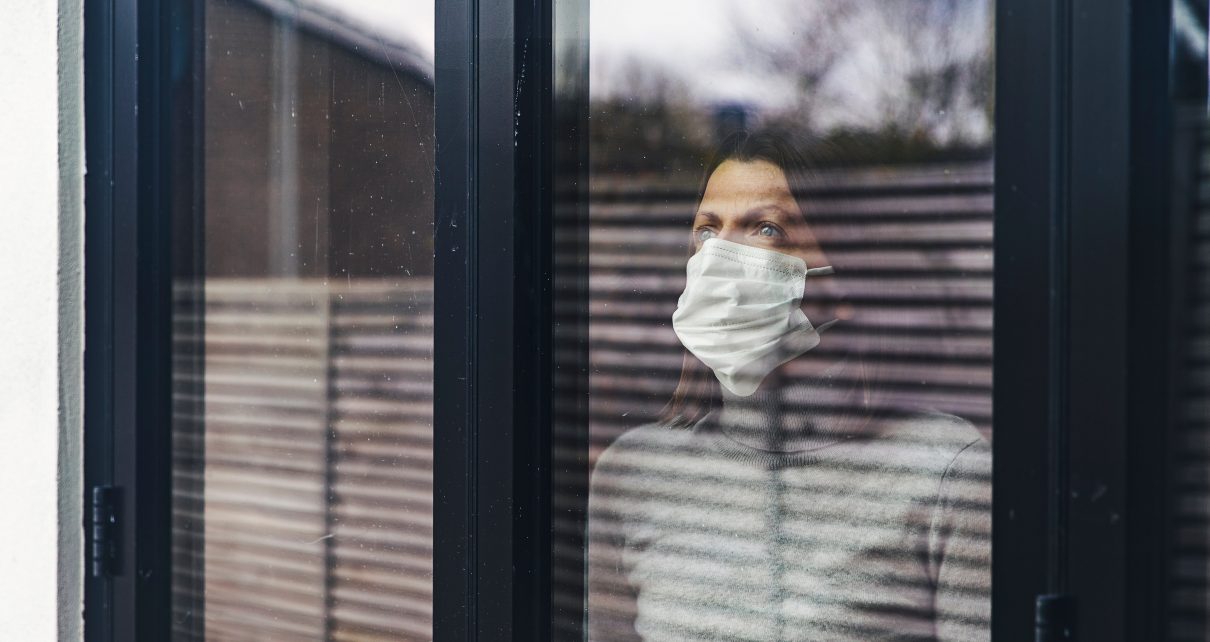The need for connection– to form and maintain at least a minimal number of positive, stable, intimate relationships– is a fundamental need that affects our whole being, permeating our entire suite of emotions, thoughts, and behaviors. While voluntary solitude can be great fodder for creativity, and being alone doesn’t necessarily indicate loneliness, what happens when people are forced into isolation and are severely deprived of this fundamental human need?
Surprisingly, while the physical and mental health effects of loneliness are well documented, there is a lack of research on the consequences of severe forced isolation. If the need for connection really is a basic need, then its deprivation should show similar effects on the brain and behavior as the deprivation of other basic needs such as food and sleep.
The feeling of “wanting” something has repeatedly been shown to increase dopamine transmission in the brain reward circuit (see here and here). This circuit consists of the dopamingeric midbrain and the striatum. These areas are particularly active in response to images of food when hungry, to drug-related images for those who are addicted, and people with Internet Gaming Disorder who are deprived of gaming (see here, here, and here).
What about social interactions? For social animals, it would make sense that social interactions would be a primary reward. However, so far such research has primarily been conducted on mice. In 2016, Gillian Matthews and colleagues published a paper showing that after 24 hours of social isolation, dopamine neurons in the midbrain were activated when mice sought social interaction. These dopamine neurons showed similar activation patterns to other cravings. It appears that the acute social isolation in these mice led to an aversive “loneliness-like” state that increased motivation for social engagement. Nevertheless, researchers have questioned whether these findings would apply to humans, especially since it’s not possible to assess whether a mouse subjectively feels lonely.
Livia Tomova, a postdoctoral fellow in the Saxelab at MIT, was inspired by this earlier research on mice and pitched to Rebecca Saxe the idea of trying to replicate the findings in humans. The researchers had a number of methodological challenges to overcome, however.
For one, a single day of social isolation is not that long for a human, and being alone doesn’t necessarily translate to feeling social isolated. Solitude can be restorative. To address this challenge, the researchers had 40 socially-connected healthy human adults spend 10 hours (9am to 7pm) alone, with no social interaction and no other social stimulation (e.g., twitter, email, reading fiction).
Another methodological limitation is the measurement of neural responses in the relevant dopaminergic midbrain regions. This is a real technical challenge. The relevant areas are really tiny, right next to the sphenoid sinus and are prone to distortions and signal loss. To address this challenge, the researchers used an optimized imaging protocol and a newly available midbrain atlas to identify the relevant areas in the brain of each individual participant.
Finally, the researchers were unsure whether they could actually measure signals associated with craving, especially considering that in the substania nigra part of the reward circuit, about 70% of the neurons are dopamingergic! To address this challenge, the researchers had participants view images of their favorite social activities, favorite foods, and a pleasant baseline condition (flowers) to tease apart the brain responses to these differing stimuli. Undergraduate researchers spent hours scouring thorough databases of open source images from pexels to custom tailor pictures of favorite foods and activities for each individual participant.
After spending a full day either fasting or socially isolated, participants came to the lab and had their brains scanned in the evening (at 7pm) on three separate occasions. Researchers measured brain activity specifically in the substantia nigra, the midbrain dopaminergic region that is specifically associated with subjective experiences of craving food when hungry or craving drugs when addicted.
What did the researchers find?*
Social Isolation on the Brain
After only ten hours of social isolation– and even despite people knowing exactly when their deprivation would end– people reported substantially more social craving, loneliness, discomfort, dislike of isolation, and decreased happiness than they did at baseline. Similarly (and unexpectedly), the same findings were seen after ten hours of food fasting.
Critically, the researchers found similar midbrain activity in response to food cues after fasting and social cues after isolation. The response was variable across participants, and those who reported more social craving after the social isolation period showed a larger brain response to the social stimuli.
Interestingly, the variability across participants was also partially explained by the variability in pre-existing chronic levels of loneliness. Participants with higher levels of chronic loneliness at baseline reported less craving for social contact after 10 hours of isolation in response to the social stimuli, and showed a muted response in their midbrain in response to the social cues after social isolation (they also showed reduced midbrain responses to food cues after fasting). This finding is consistent with prior research showing that chronic loneliness is associated with reduced motivation to engage socially with others.
Implications
These results are exciting because they are consistent with the results from earlier research on mice and the “social homeostasis” hypothesis developed based on animal models. According to this hypothesis, since social connection is an innate need, animals evolved neural system to regulate “social homeostasis”.
The current findings suggest that there is a similar mechanism underlying social craving in humans, and that people who are forced to be isolated crave social interactions in a similar way as a hungry person craves food. As the researchers note, these findings are also encouraging for translating mouse models of mental health disorders that affect social motivation, such as autism spectrum disorder, social anxiety disorder, or depression. As Rebecca Saxe wrote on twitter,
“It could be useful to know how similar mice are to men (and women, of course). Because many labs study social motivation in mice, with an eye towards eventually improving human mental health.”
An important question for future research is just how much, and what kinds of positive social interactions are sufficient to fulfill the fundamental need for connection and to significantly reduce or even completely eliminate the neural craving response. The researchers points to the promise and perils of technological advances designed to increase virtual connection despite physical separation (i.e., online social media).
Future studies could compare dopamingeric responses in the midbrain to social cues following isolation with and without access to social media. Saxe wonders, “would the effects of isolation be completely eliminated if participants could use social media? What if participants could view social media (passive use), but not post or interact (active use)?” Another important future direction is an investigation of age effects. Does forced isolation effect different age groups (e.g., adolescents, older adults) differently? How might social media use play a role in moderating these age effects?
Conclusion
All in all, these findings are really rather striking. It’s noteworthy that the images the researchers selected were of strangers engaged in each participants’ favorite social activities. The researchers chose to use strangers so that they could control for novelty (the midbrain is really sensitive to novelty). However, it’s entirely possible that images depicting familiar friends, family, and other loved ones would evoke an even stronger neural social craving response than what the researchers found.
Also, the forced isolation of the study only last ten hours. What happens when it’s much, much longer? Well, this isn’t all that hypothetical. As the researchers note,
“In early 2020, millions of humans experienced a sudden externally mandated period of relative or complete physical isolation from others, as public health officials sought to slow the spread of an infectious novel corona virus. This unprecedented upheaval in people’s social routines emphasized the need for a better understanding of human social needs and the neural mechanisms underlying social motivation. The current study provides a first step in that direction.”
As Rebecce Saxe further noted on twitter, while she had been working with her team on the project for over three years, the topic of forced social isolation is “suddenly relevant and timely”:
“In January, when we started writing the paper, I was thrilled with the results but worried that it might be on a niche topic. Why would a healthy, socially-connected, adult be externally mandated into isolation? And then… it became suddenly surprisingly relevant. To my life and everyone else’s. Writing this paper over the last week, while home with my kids, has actually been a source of sanity. A way to channel energy. I’m very grateful to have had this work to do, this week.”
I asked lead author Livia Tomova for further comment and she said:
I think one general takeaway of our study is that it highlights how important being connected with others is for humans. If already one day of being alone makes parts of our brain respond as if we had been fasted for the whole day, it suggests that our brains are very sensitive to the experience of being alone. In times of physical distancing, we might have to pay special attention to people who live alone and/or might have restricted access to digital technologies. Those people might experience a very extreme version of social distancing which might have negative effects on their mental health.
Something to keep in mind as we’re all dealing with this forced social isolation– together.
—
* Note that their preprint is not peer reviewed yet; this is a preliminary version of their paper. Their final paper may have some revisions, but Rebecca Saxe told me that the main conclusions of the study are unlikely to change.



